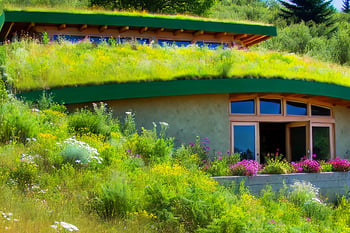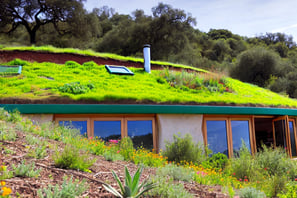Building an Earth House: What You Need to Know Before Digging In
Earth houses, also known as underground or earth-sheltered homes, are a sustainable and energy-efficient choice for off-grid living. Built into the ground or covered with soil, these homes blend seamlessly with the environment while offering exceptional insulation and protection from extreme weather. If you’re considering building an earth house, this guide will walk you through the essentials to ensure a successful and rewarding project.
HOUSING
11/21/20242 min read


What is an Earth House?
An earth house is a structure designed to use the natural insulating properties of the earth to regulate indoor temperatures. These homes are often:
Partially or completely built into the ground.
Covered with soil and vegetation for natural insulation.
Constructed using sustainable materials like rammed earth, earthbags, or adobe.
Benefits of an Earth House
Energy Efficiency: The earth provides natural insulation, keeping your home warm in winter and cool in summer, reducing energy needs.
Sustainability: Built with natural, locally sourced materials, earth houses have a minimal environmental impact.
Durability: Resistant to extreme weather, earthquakes, and even wildfires.
Aesthetic Appeal: Earth houses blend harmoniously with the landscape, offering a unique, natural aesthetic.
Cost Savings: With proper planning and DIY techniques, building an earth house can be more affordable than traditional homes.
Steps to Building an Earth House
1. Plan Your Design
Decide on the Layout: Do you want a fully underground home or a partially earth-sheltered one? Choose a design that suits your climate and personal preferences.
Incorporate Natural Light: Plan for skylights, light wells, or south-facing windows to bring in natural light.
Choose Materials: Common materials include:
Rammed Earth: Soil compacted in layers to form walls.
Earthbags: Bags filled with soil or sand stacked to create a strong structure.
Adobe: Sun-dried bricks made from clay and straw.
2. Select the Right Location
Soil Type: Opt for stable, well-draining soil to prevent structural issues.
Sun Orientation: Position your home to take advantage of natural sunlight for passive heating.
Waterproofing Needs: Avoid areas prone to flooding or water pooling.
3. Excavate the Site
Work with professionals to excavate the site safely.
Plan for proper drainage to prevent water from accumulating around your home.
4. Build the Structure
Foundation: Lay a strong foundation using materials like concrete or rammed earth.
Walls: Construct the walls using your chosen earth-based material, ensuring they’re compacted and reinforced for strength.
Roof: Install a sturdy roof that can support the weight of the soil and vegetation above it.
5. Waterproof and Insulate
Use high-quality waterproof membranes to protect your home from moisture.
Add insulation where needed, such as beneath the roof or around windows and doors.
6. Cover with Soil and Vegetation
Cover the roof and sides with soil for natural insulation.
Add native plants or a green roof to blend with the surroundings and prevent erosion.
Challenges to Consider
Moisture Control: Proper waterproofing and drainage are critical to prevent leaks and mold.
Ventilation: Earth homes need good ventilation to maintain air quality and prevent dampness.
Building Codes: Check local regulations to ensure your design meets safety and zoning requirements.
Costs of Building an Earth House
The cost of building an earth house depends on factors like size, materials, and whether you hire professionals or take the DIY route. On average:
DIY Earthbag Homes: $10,000–$20,000
Professionally Built Earth Houses: $50,000–$200,000+
These costs are often offset by long-term savings on energy and maintenance.
Living in an Earth House
Earth houses are quiet, comfortable, and naturally beautiful. Their insulation and durability make them ideal for off-grid living, especially in areas with harsh climates. By embracing this sustainable building method, you’ll enjoy a home that’s not only eco-friendly but also uniquely yours.
Conclusion
Building an earth house is a rewarding journey that combines creativity, sustainability, and practicality. With the right planning and techniques, you can create a home that’s energy-efficient, durable, and in harmony with nature.





